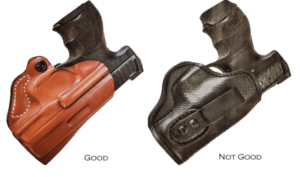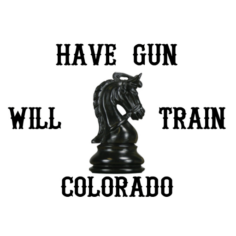Administrative Gun Handling
is the area of gun handling where all the accidents happen. What is administrative gun handling? It’s loading and unloading, cleaning, transporting, holstering, or unholstering. As a matter of fact, it’s anything you do with a gun besides shooting it.
Loading and Unloading-
Many people don’t handle their handguns properly. Some struggle with basic manipulation of the slide to load and unload the gun. They twist and turn and point the muzzle (rule number 2) (muzzle direction) in places that are considered unsafe or inappropriate. If you rack the gun from right to left or left to right you are probably doing it unsafely. Someone can be in the shooting booth next to you and you are pointing the muzzle at them. You could be out on the prairie and someone your shooting with might be standing next to you.
Many people struggle with these standard gun manipulations because they were never taught how to do it properly. If you can’t do it properly then you are probably operating a gun that’s not for you, or you have never been shown the correct way to do it. I see many people who violate (rule number 3) (finger off trigger) while trying to manipulate the slide to load and unload the gun. Get professional help and training on how to manipulate the slide properly on a semi-auto handgun.
Cleaning a Handgun-
is always an area of administrative gun handling that has some accidents. Clearing the gun properly is the first step. Check the gun multiple times to be sure it is unloaded. Remove all the ammo from the area. If you learn proper manipulation of the slide and keep your finger off the trigger it’s hard for things to go wrong. Always visually and physically inspect the chamber and the mag well for any ammo that may be present. If you can clear a gun properly (unload) it’s pretty hard to have an accident while cleaning a handgun. Have fun cleaning your gun.
Transporting a Gun-
in an automobile, a purse or manbag is an administrative gun handling area where accidents happen because people don’t think. Guns should always be holstered or cased. Why? Because something can activate the bang switch (trigger) by mistake. A properly holstered or cased handgun can not be fired. Proper holsters are a must. They must retain the gun so it doesn’t fall out and they must cover the trigger and trigger guard completely so it can not be fired without an intensional act of exposing and then accessing and pressing the trigger.

Holstering and Unholstering Accidents–
happen frequently to both civilians and law enforcement. Many people think they can learn to draw a handgun from a holster without professional training. Many think youtube is a substitute for a professional firearms trainer. Only one in a hundred firearms instructors are certified to teach draw from the holster. A person that is an NRA certified Pistol instructor is not certified to teach draw from the holster. Many instructors that try to train people properly have not had the training themselves. Anyone using an improper holster for a handgun risks having an accident. Many of the carry positions or methods of on-body carry are inherently dangerous.
This is because you are pointing the muzzle at yourself or someone else in the process of getting the gun on target from the holster. The biggest problem is that you can not see yourself doing it when you are practicing. It takes a trained professional to watch your draw and diagnose the dangerous and unnecessary movements in your presentation of the gun. Many of the unnecessary movements slow down your draw time.
Most of these Administrative Gun Handling accidents happen when people think a gun is unloaded or when they can’t keep their finger off the trigger. Learning to properly and safely manipulate a handgun removes a lot of the negative things that can happen in gun handling situations.
